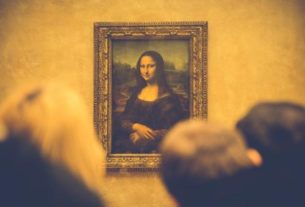Repartee: a succession or interchange of clever retorts: amusing and usually light sparring with words *
Set exclusively in a high-class boarding-house for gentlemen, Coffee and Repartee is a clever, funny assortment of short tales made up of repartee after repartee taking place between the boarders over breakfast. Written in 1893 by John Kendrick Bangs, this anthology of humorous short stories is the first title in a six book series featuring The Idiot, one of the residents at the boarding-house and the central character with whom the other tenants engage in amusing verbal battle.
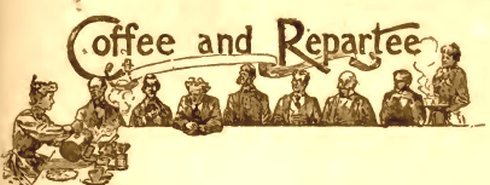
The dining table of the boarding-house at the breakfast hour is the main setting for each vignette in this anthology. In each story, we find some of the middle aged boarders trying to outclass a young tenant, whom they call ‘The Idiot’, with sarcastic remarks and observations. Even though he is called ‘The Idiot’, he responds to their mocking jibes with quick and clever replies and outwits them, which results in funny conversations for the reader to enjoy.
The tenant characters – with names like The Doctor, The School-Master, The Bibliophile, The Whitechoker, The Poet and The Genial old gentleman who occasionally imbibes – who represent various professions are created with a comic touch by the author.
“Well, perhaps you are right, ” returned the Idiot. “People do, as a rule, prefer to talk of things they know something about, and I don’t blame you, Doctor, for wanting to keep out of a medical discussion. I only asked my last question because the behavior of the Bibliomaniac and Mr. Whitechoker and the School-master for some time past has worried me, and I didn’t know but what you might work up a nice little practice among us. It might not pay, but you’d find the experience valuable, and I think unique. “
“It is a fine thing to have a doctor right in the house, ” said Mr. Whitechoker, kindly, fearing that the Doctor’s manifest indignation might get the better of him.
“That, ” returned the Idiot, “is an assertion, Mr. Whitechoker, that is both true and untrue. There are times when a physician is an ornament to a boarding-house; times when he is not. For instance, on Wednesday morning if it had not been for the surgical skill of our friend here, our good landlady could never have managed properly to distribute the late autumn chicken we found upon the menu. Tally one for the affirmative. On the other hand, I must confess to considerable loss of appetite when I see the Doctor rolling his bread up into little pills, or measuring the vinegar he puts on his salad by means of a glass dropper, and taking the temperature of his coffee with his pocket thermometer. Nor do I like—and I should not have mentioned it save by way of illustrating my position in regard to Mr. Whitechoker’s assertion—nor do I like the cold, eager glitter in the Doctor’s eyes as he watches me consuming, with some difficulty, I admit, the cold pastry we have served up to us on Saturday mornings under the wholly transparent alias of ‘Hot Bread.’ I may have very bad taste, but, in my humble opinion, the man who talks shop is preferable to the one who suggests it in his eyes. Some more iced potatoes, Mary, ” he added, calmly.
‘The Idiot’ is presented by the author as a very polite character who often ignores rude and offending comments from others. The sharp, thorough and often tongue in cheek replies from ‘The Idiot’, even though they pack enough punch to stun his opponents, are always delivered in a very polite fashion, which gives a certain amount of charm to the narrative. This is a work from the early 1890s and a little bit of understanding about the social settings of that time period can add to the enjoyment of this book.
Who illustrated the 1893 First Edition of Coffee and Repartee?
Both the 1893 and 1899 editions of Coffee and Repartee from Harper & Brothers Publishers, contains about 26 beautiful black and white pencil sketches, depicting the scenes from the narrative. In both these editions the illustrations are not credited to any artist. Online sources often give the credit for the artworks in the early editions of ‘Coffee and Repartee’ to the American painter & illustrator F. T. Richards as he was the illustrator for two of the later books in the series.
But the signature found in these illustrations are obviously not of F. T. Richards as he signs clearly using his name and is easy to recognize. The signatures found in the artworks in Coffee and Repartee are more complex and graphical in nature rather than being plain and readable. The fact that these illustrations are signed with different style signatures also made the identification of the artist more difficult.
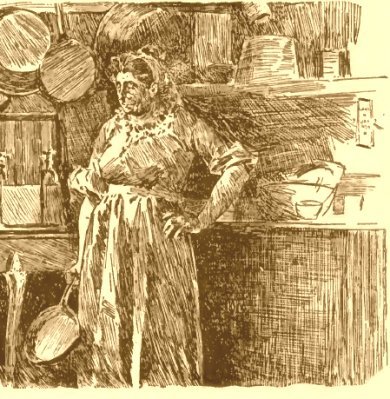
In this illustration we can identify a vertical pillar or rectangular box like signature on the center right hand side of the artwork.
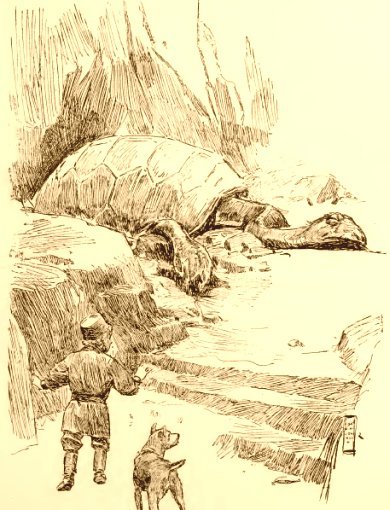
I came across a similar signature in an artwork from an 1893 copy of Baron Trump’s marvellous underground journey by Ingersoll Lockwood. And the title page of that volume had credited Charles Howard Johnson as the illustrator of the book.
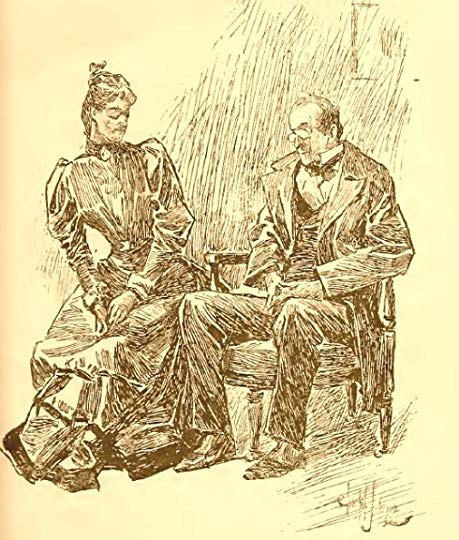
Another more elaborate signature from the book resembled the signature found on Peaceful in the Parlor, a painting by Charles Howard Johnson done in 1894.
Further research showed me that another book titled Half-hours with Jimmieboy from 1893 by John Kendrick Bangs was illustrated by Charles Howard Johnson, and the illustrations had similar signatures. All these facts allows us to safely make the assumption that the artworks for the early editions of Coffee and Repartee were indeed done by Charles Howard Johnson.
Charles Howard Johnson was an American illustrator whose artworks appeared in prominent magazines like Life & Truth during the 1890s.
* Definition from the Merriam-Webster Dictionary. The word has its origin in the Middle French.
Written By : Pramod S Nair



